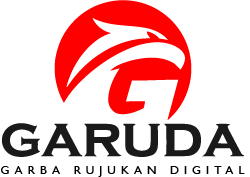THE EFFECTIVENESS OF ONLINE INSTRUCTIONAL VIDEOS IN TEACHING STUDENT SPEAKING SKILL
DOI:
https://doi.org/10.22460/eltin.v9i2.p101-108Keywords:
Online instructional videos, Media, Speaking, PowtownAbstract
This study aims to find out whether there is significant effect of teaching speaking using online instructional videos to the students’ speaking achievement. This reserch used quantitative research method. Pre-experimental design was employed in this research. Ten grade students of An-Nuqthah of Islamic Senior High School were chosen as the sample of this research. The sample was selected by using random sampliong technique. The instruments of this research are pre-test and post-test. Then, the data obtained were analyzed statistically. The statistical analysis results showed that the mean score of the students in the pretest was 41.07 and the mean score of posttest was 82.14. In addition, the value of tcal (4.49) was higher than ttable (1.782). It means that the use of online instructional video was considered effective in improving students’ speaking skill. From this research, the teachers are recommended to use online instructional video as the median in teaching speaking.ÂReferences
Alkhatnai, M. (2016). Using laptops in the writing classroom: Applying technology for heuristic learning. Arab World English Journal (AWEJ) Special Issue on CALL, (3).
Adnyani, L. D. S., Mahayanti, N. W. S., & Suprianti, G. A. P. (2020, January). PowToon-Based Video Media for Teaching English for Young Learners: An Example of Design and Development Research. In 3rd International Conference on Innovative Research Across Disciplines (ICIRAD 2019) (pp. 221-226). Atlantis Press.
Ashaver, D., & Igyuve, S. M. (2013). The use of audio-visual materials in the teaching and learning processes in colleges of education in Benue State-Nigeria. IOSR Journal of Research & Method in Education, 1(6), 44-55.
Burden, P.R. and Byrd, D.M. (1999). Methods for Effective Teaching.USA: Allyn and Bacon.
Chan, D., & Herrero, C. (2010). Using movies to teach languages: A teachers’ toolkit. It was produced for Cornerhouse (part of Projector: Community Languages). Retrieved on January, 12, 2015.
Dahar, R. (1996). “Teori-Teori Belajar.†Erlangga
Derakhshan, A., Khalili, A. N., & Beheshti, F. (2016). Developing EFL learner’s speaking ability, accuracy and fluency. English Language and Literature Studies, 6(2), 177-186.
Edmons, T.J., & Branch, R. M. (2002). Survey of Instructional Development Models(4thed). Syracuse, NY: Eric CleareingHouse on Information.
Greenberg, A. D., & Zanetis, J. (2012). The impact of broadcast and streaming video in education. San Jose. Retrieved from http://www.cisco.com/web/strategy/docs/education/ciscovideowp.pdf
Harmer, J. (2006). The Practice of English Language Teaching. Third Edition Completly Revised and update. Malaysia: Longman.
Harmer, J. (2007). How to Teach English (New Edition). Harlow: Pearson Longman
Koşar, G., & Bedir, H. (2014). Strategies-based instruction: A means of improving adult EFL learners’ speaking skills. International Journal of Language Academy, 2(3), 12-26.
Newby, T., Stepich, D., Lehman, J., & Russell, J. (2000). Instructional technology for teaching and learning: Designing instruction, integrating computers, and using media (2nd ed.). Columbus, OH: Prentice-Hall.
Nurmayasari, Dewi. (2011). The Use of Audio Visual Aid inTeaching Speaking.S1 thesis, Indonesia University of Education: Bandung.
Sadiman, A.S., et all. (2008). Media Pendidikan: Pengertian, Pengembangan, dan Pemanfaatannya. Jakarta: PT Raja Grafindo Perkasa.
Smaldino, Sharon E., Lowther, deborath L., Russel, James D.. 2008.Instructional Technology and Media for Learning (ninth Edition). Upper Saddle River NJ: Pearson Education
Zuhriyah, M., Agustina, R. K., & Fajarina, M. (2018). The influence of students’ creativity to construct sentences toward their speaking skill. Register Journal, 11(1), 1-18.









